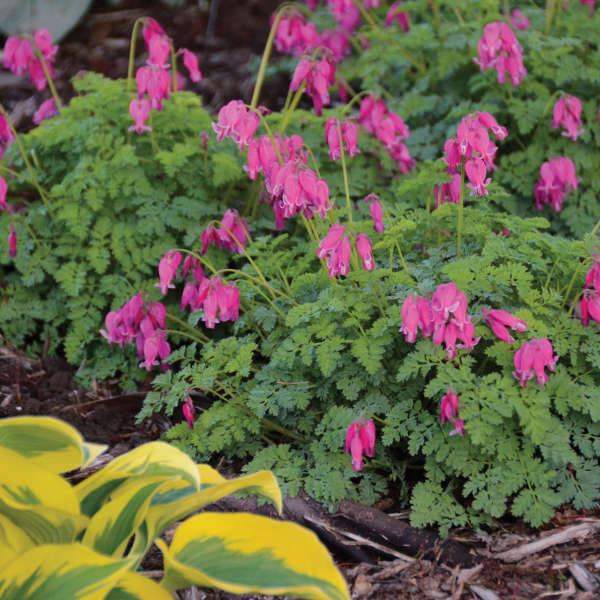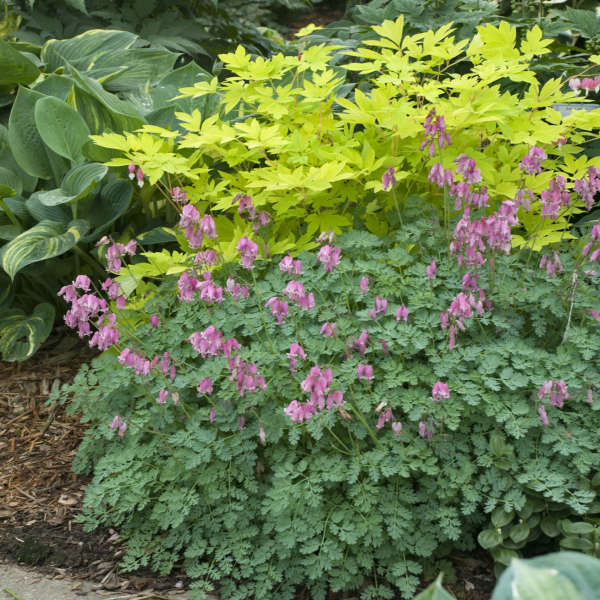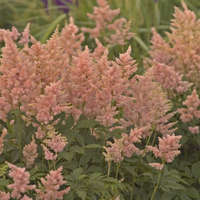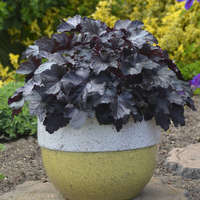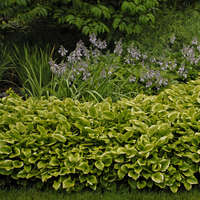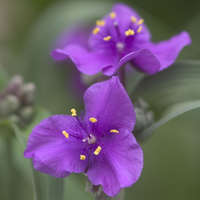Dicentra 'King of Hearts'
Common Name: Fern-leaved Bleeding Heart, Western Bleeding Heart
This steady performer has everything you could want in a fern-leaved bleeding heart: astonishing vigor, sun and heat tolerance, bright rose heart-shaped flowers that appear from late spring into fall, and lacy, soft blue-green foliage. Unlike the Old Fashioned Bleeding Heart, 'King of Hearts' will not go dormant in midsummer as long as the soil is kept moist. Rather, it will enchant passersby all season long.
